Wir gratulieren…
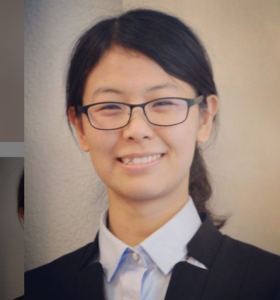
Wir gratulieren Frau Jinshan He zu ihrer Ernennung zum „assistant professor“ an der USTB in Peking. Prof. He war in der Zeit von 2014 bis 2018 am IEHK als Stipendiatin im CSC-Programm beschäftigt. Dabei hat sie sich im Gebiet von Prof. Münstermann mit der Spaltbruchauslösung in ferritisch-perlitischen Stählen befasst. An der USTB forscht sie an Schädigungsmechanismen von Stählen und Superlegierungen während ihres Einsatzes sowie der Simulation des analysierten Verhaltens. Wir wüschen Prof. He alles Gute für die Zukunft und freuen uns mit ihr über ihren Erfolg.
Zu Besuch beim DESY
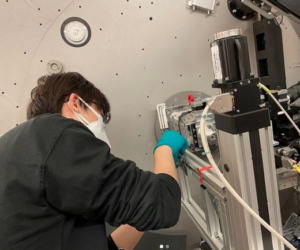
Das IEHK war zu Besuch beim Deutschen Elektronik Synchrotron (DESY) in Hamburg. Bei einer Synchrotron-Messung handelt es sich um eine hochenergetische Röntgenbeugungsanalyse. Dabei wurden Proben eines AHSS-Stahls der dritten Generation in Hamburg gemessen. Einen Teil des Resultates seht ihr im zweiten Bild. Das sogenannte Debye-Scherrer-Beugungsmuster seht ihr im linken Teil. Die Durchmesser der Beugungsringe entsprechen dem Beugungswinkel. Unter Zuhilfenahme der Braggschen Gleichung lässt sich die auf der rechten Seite sichtbare Kurve generieren und auch die kleinsten Bestandteile durch ihr Kristallsystem akkurat quantifizeren.
Dr. Frederic Crimmann
Wir gratulieren unserem Kollegen Frederic Crimmann zur erfolgreich bestandenen Doktorprüfung! 🎓🥳
Die Prüfung fand Ende Mai 2021 teilweise virtuell und in unserem Institut statt. Das Thema seiner Dissertation ist die „Thermomechanische Untersuchung der Primärkühlzone einer Stahl-Stranggießanlage unter Einsatz faseroptischer Temperatursensoren“ unter der Betreuung von Prof. Senk. Wir wünschen ihm für seinen weiteren Lebensweg alles Gute! 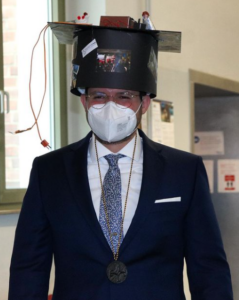
Hey everyone! My name is Oguz…
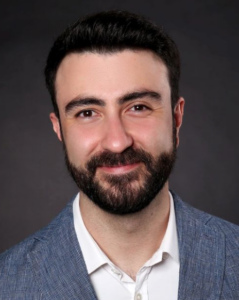
Hey everyone! My name is Oguz and I started to work as a research associate with the aim of PhD at IEHK in the Materials Characterization group in May 2021. Since I earned my Master’s degree in Metallurgical Engineering at IEHK, I had a chance to explore interesting research topics as well as to experience friendly working environment.
Currently, I am working on a BMBF funded project called iBain, in collaboration with Fraunhofer IWM and ICAMS. It focuses on the implementation and integration of comprehensive experimental and simulation data into knowledge graphs, which contain the microstructure formation as a function of thermomechanical process control and the resulting fatigue behavior, using bainitic steels. The aim is to establish an automated, digital „workflow“ which, in a later step, will enable industrial users without in-depth expert knowledge to analyze and evaluate their own data in the same way (data sovereignty). For this purpose, an artificial material intelligence (AI) system is being developed, which collects, analyzes and provides structured experimental and simulative data stored in a database. The resulting digital representation will allow a predictive property description of bainitic steels depending on the microstructure and the processing steps and can be used to predict optimized process parameters and consequently to improve material grades.
Heute stellt sich vor
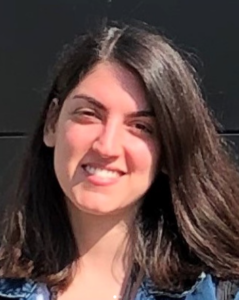
Hello everyone! I am Dilay. I started to work as a research assistant with the aim of PhD at IEHK in the group of Integrated Computational Materials Engineering (ICME) in June 2021.
Currently, I am working on the DfG project called ProZell, which focuses on the development of programmable cellular metals through combined material and geometric optimization, in collaboration with Fraunhofer IWU in Chemnitz. It aims to develop high-manganese steels (HMnS) produced both by investment casting and additive manufacturing (SLM) through the adjustment of the cell geometry and the introduction of a material model which can determine structure-property relationships, especially for energy absorption purposes. The goal for material modelling is the implementation of the microstructures resulting from solidification and heat treatment and the corresponding mechanical properties of the TRIP / TWIP steels in the simulative design of the geometrically ideal cell.
Even though I have already become familiar with the institute during my Master’s study, I am keen to get the know the organization better and excited about the project that I am working on.
Neuzugang in der Integrative Werkstoffsimulation
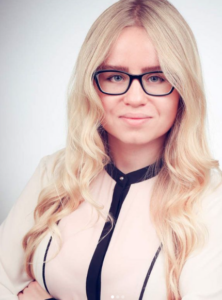
Hallo zusammen! Mein Name ist Ekaterina Evsiutkina. Ich bin seit Anfang Mai als wissenschaftliche Beschäftigte mit dem Ziel der Promotion beim IEHK angestellt und werde die Arbeitsgruppe „Integrative Werkstoffsimulation“ im Gebiet: „Entwicklung hochfester Kupferwerkstoffe für die laserbasierte additive Fertigung“ unterstützen.
Aktuell beschäftige ich mich mit dem DfG-Projekt “Development of a novel processing route for dispersoid/precipitation-strengthened high conductive copper alloys by using metallized nano ceramics in additive manufacturing” in enger Zusammenarbeit mit der Technischen Universität Dresden und der Hochschule Osnabrück. Das Projekt zielt auf die ICME-gesteuerte Entwicklung einer neuen Gruppe von Cu-MMC-Werkstoffen ab, die durch eine Kombination von Gaszerstäubung und Pulvermodifikation durch Nanopartikel und additive Fertigung (SLM) hergestellt werden. Aufgrund der hohen Wärmeleitfähigkeit und des hohen Reflexionsvermögens von Cu und seinen Legierungen sind sie durch SLM schwer in einer ausreichenden Qualität mit geringer Porosität zu verarbeiten. Darüber hinaus, erfordern die neuen Anwendungen komplex geformte Hochleistungswärmetauscher aus Cu-Legierungen, sie sind eine optimale Kombination aus Festigkeit, thermischer und elektrischer Leitfähigkeit. Diese Herausforderungen werden gestellt durch die Anwendung einer grünen Laserquelle mit geringem Reflexionsvermögen.
Zudem stehe ich für Eure Fragen in der Studienberatung gerne zur Verfügung.
Nachhaltigkeit und Recycling
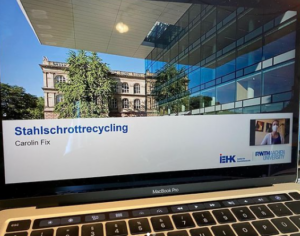
Auch dieses Jahr fand wieder das MINT-Camp satt, diesmal in virtueller Form. Bei dem viertägigen Camp hatten die Schüler die Möglichkeit, unsere Fachgruppe ganz im Rahmen der Frage von Nachhaltigkeit und Recycling kennen zu lernen.
Diesmal stand das Handy im Mittelpunkt! 📲
Wir vom #IEHK haben uns mit der Frage beschäftigt, wie Handys designed werden damit sie nicht kaputt gehen. Dabei haben wir den Schülern zum Beispiel zeigen können, warum das Handy bei einem Sturz manchmal unbeschadet bleibt, aber dann wiederum unter den Gleichen Bedingungen durch einen ungünstigen Aufprallwinkel der Gesamte Bildschirm kaputt geht. #Spiderapp
Wir hoffen Ihr fandet das Thema auch so Interessant wie wir und dass es euch genau so viel Spaß gemacht hat wie uns.
Das virtuelle Eifelkolloquium
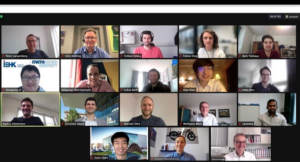
Am 5. und 6. Mai fand unser regelmäßiges Treffen von Doktorandinnen und Doktoranden mit ihren Betreuenden statt. Normalerweise Reisen dazu alle Teilnehmenden in die nahegelegene Eifel und verbringen dort zwei Tage mit gemeinsamen Aktivitäten und Vorträgen. Durch die Corona Pandemie konnten wir in diesem Frühjahr leider keine Fahrt antreten. Darum haben wir uns dieses Mal zu einem virtuellen „Eifelkolloquium“ getroffen, bei dem es viele interessante und lehrreiche Vorträge gab. Die Themen waren dabei so vielfältig wie die Forschungsgebiete unseres Instituts. Zum Beispiel gab es von tollen Entwicklungen im Bereich der additiven Fertigung zu berichten, bei denen es um neue Legierungskonzepte und ihre technologischen Eigenschaften ging. Ein anderes Beispiel waren neue Methoden zur Erstellung von repräsentativen Volumenelementen unter Einsatz von KI, die eine genauere Verknüpfung von Eigenschaften und Gefüge zulassen. Allen Vortragenden möchten wir für zwei intensive und spannende Tage unter den nicht ganz einfachen Bedingungen danken. Wir hoffen natürlich, dass wir bald auch wieder eine gemeinsame Fahrt veranstalten können!
Hallo ich bin Venkatesh…
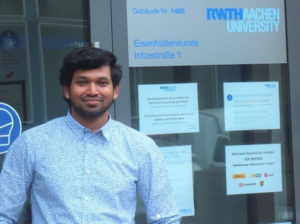
Hi, I am Venkatesh. Since April 2021, I am working as a research assistant at the IEHK with the goal of a Ph.D. I got to know the institute during my Master’s program on Metallurgical engineering. The combination of nice work colleagues and interesting research topics motivated me towards a Ph.D. here as well.
I am working on the EU-funded project “topAM“ intending to computationally design oxide dispersed strengthened alloys for Additive Manufacturing. Additive manufacturing, a fast-growing technology in industries can unleash its full potential through customizing alloys, which I intend to explore in my Ph.D. through the ICME framework.
With multiple project partners across Europe, I am thankful to IEHK for the opportunity. Stay hungry!
Yongfa Zhang stellt sich vor
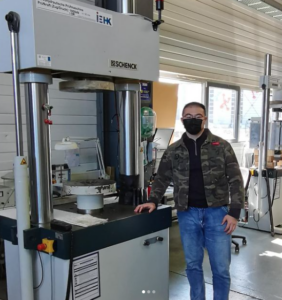
Hello everyone, I am Yongfa Zhang, a visiting doctoral student originally from Chongqing University. I will be research assistant in the IMS Group for the next two years. I am very glad to meet everyone of you. As a visiting doctoral student through the Chinese Government Scholarship program, I am originally from the college of material science and engineering at Chongqing University. I will be working with the ‚Macroscopic group‘ in IEHK for my Ph.D thesis on the topic of Multi-scale Numerical Approach in Failure Modelling of High Pressure Die-Casting Aluminum Alloys.
The main objective of the present work is the development of a numerical material model which allows to predict accurately the deformation and failure behaviour of aluminium casting alloys considering the influence of casting defects on the material ductility. During this process, both X-ray tomography technique and digital image correlation method will be utilized to help us thoroughly understand the influence of internal defects on the deformation mechanisms of microstructure and even the macroscopic properties of the material.
RWTH Aachen University has a very good reputation for offering great challenges to young people.That’s the reason why I would like to join IEHK and continue my research. I am thankful to be a part of IMS group.“

